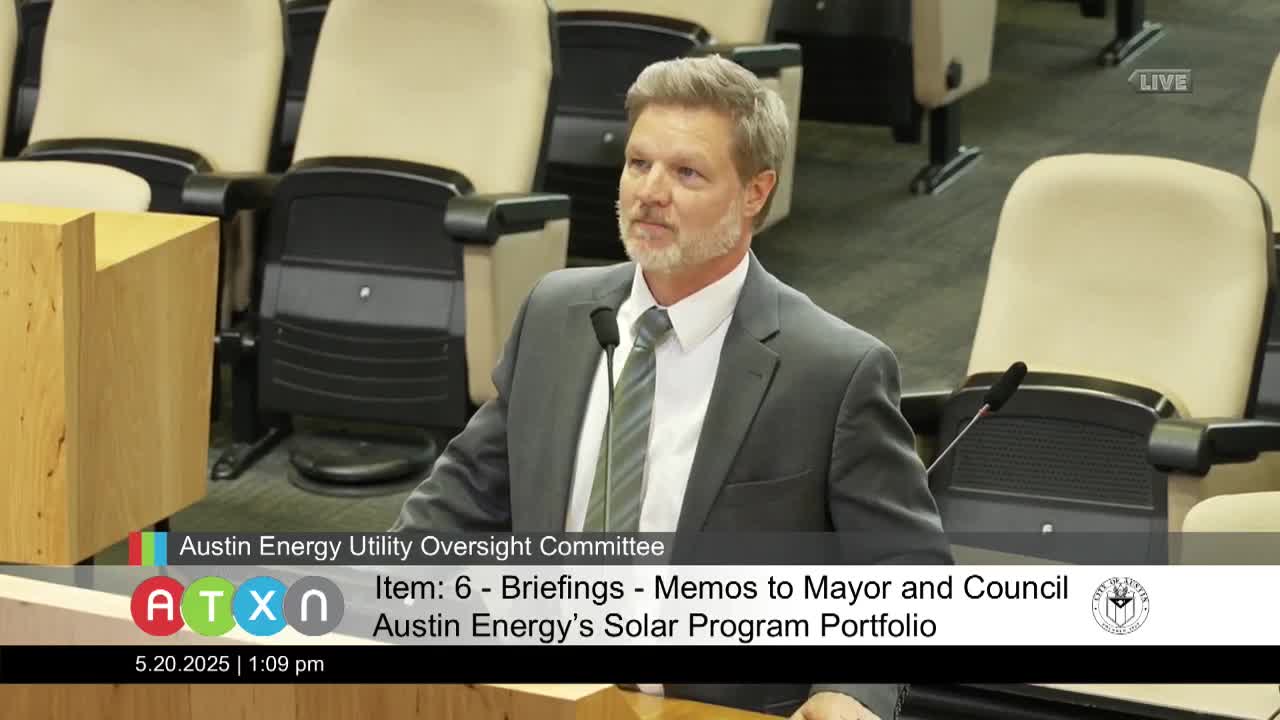Austin's Solar Programs Expand Renewable Energy Options for Residents and Businesses
May 20, 2025 | Austin, Travis County, Texas
Thanks to Scribe from Workplace AI , all articles about Texas are free for you to enjoy throughout 2025!

This article was created by AI using a video recording of the meeting. It summarizes the key points discussed, but for full details and context, please refer to the video of the full meeting. Link to Full Meeting
The committee discussed several offerings, including subscription programs for customers without roof space for solar panels and incentives for businesses to install solar systems. One of the longest-running programs, Green Choice, currently offers wind energy but plans to incorporate solar options. This program serves approximately 20,000 customers, allowing them to subscribe to 100% renewable energy for a monthly premium of about $7.50.
Another key initiative is the community solar subscription program, which is currently available only for residential customers. The standard offer program, launched in January, aims to expand the community solar portfolio, with around 7 megawatts of projects already underway and an additional 10 megawatts in the pipeline.
For businesses, Austin Energy provides two types of incentives: a performance-based incentive for larger commercial customers and a capacity-based incentive for small businesses and nonprofits, with the latter receiving a higher incentive level. Multifamily housing units can also benefit from these incentives through shared solar programs that simplify the installation process.
The meeting also highlighted homeowner incentives, including a solar education program designed to protect customers from predatory contractors. Participants can receive a $2,500 incentive after completing the education program. Additionally, the Solar for All grant, totaling $32 million from the EPA, aims to install solar systems in 2,500 low-income homes, providing energy savings and increased resilience.
Austin Energy is on track to meet its local solar generation goals, having increased its capacity from 165 megawatts to 192 megawatts. However, the committee acknowledged the challenge of reaching a target of 405 megawatts by 2027, requiring an annual installation of approximately 22 megawatts. The committee expressed optimism that the current programs would help boost solar adoption rates in the community.
Converted from Austin - Austin Energy Utility Oversight Committee - May 20, 2025 meeting on May 20, 2025
Link to Full Meeting
Comments
View full meeting
This article is based on a recent meeting—watch the full video and explore the complete transcript for deeper insights into the discussion.
View full meeting
